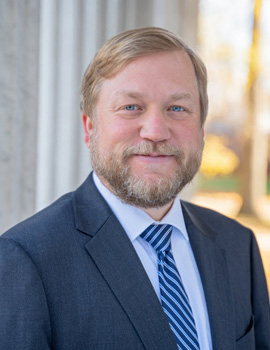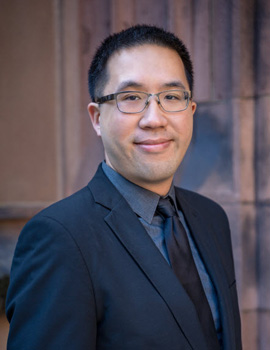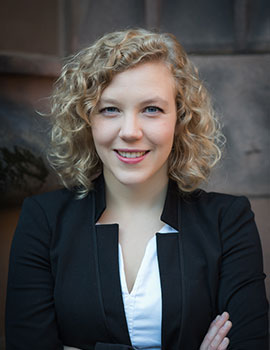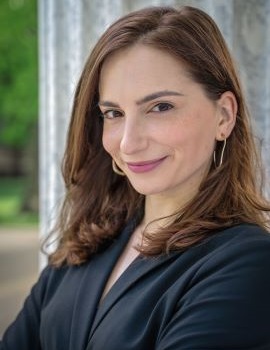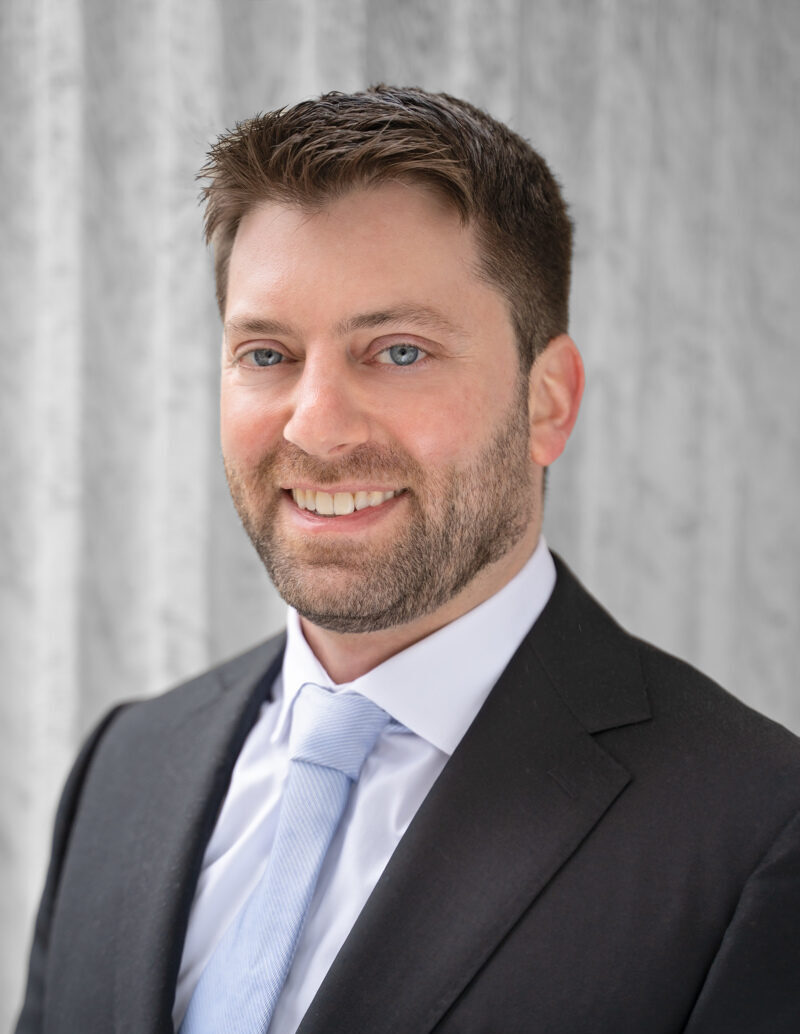845 Third Avenue, 6th Floor | New York, New York 10022
Lieberman Blecher & Sinkevich succeeds in Tenafly cell tower challenge: appeals court reverses approval
NEW YORK SMSA LIMITED PARTNERSHIP v. ZONING BOARD OF ADJUSTMENT OF BOROUGH OF TENAFLY
NEW YORK SMSA LIMITED PARTNERSHIP D/B/A VERIZON WIRELESS, Plaintiff-Respondent,
v.
ZONING BOARD OF ADJUSTMENT OF THE BOROUGH OF TENAFLY, Defendant, and
WONHO and OKSOON CHONG, GEORGE and EWA PRUSSIN, TULIN and ARISAN ERGIN, AVRAHAM and LIORA GILOR, ELLEN SHELDON and DAVID SIMSON, Intervenors-Appellants.
No. A-1152-08T2.
Superior Court of New Jersey, Appellate Division.
Argued October 14, 2009.
Decided May 24, 2010.
Stuart J. Lieberman argued the cause for appellants (Lieberman Blecher & Sinkevich P.C., attorneys; Mr. Lieberman, of counsel; Michael Sinkevich, on the brief).
Richard D. Stanzione argued the cause for respondent (Hiering, Dupignac, Stanzione & Dunn, P.C., attorneys; Mr. Stanzione, on the brief).
Before Judges Skillman, Fuentes and Simonelli.
PER CURIAM
In February 2007, plaintiff New York SMSA Limited Partnership d/b/a Verizon Wireless (Verizon) applied to defendant Zoning Board of Adjustment of the Borough of Tenafly (Board) for variances[ 1 ] and site plan approval to construct an unmanned wireless telecommunications facility on property (the site) owned by St. John’s Greek Orthodox Church (Church), which is located in the R-40 zone where such facilities are not permitted.[ 2 ] The proposed facility consists of a one hundred and twenty foot wireless telecommunications monopole with a seven foot lightning rod, and an approximately forty-by-thirty-foot fenced-in equipment shelter at its base (the tower and shelter may sometimes be collectively referred to as “the facility”). In denying the application, the Board concluded that Verizon failed to satisfy the positive and negative criteria for the grant of a use variance pursuant to N.J.S.A. 40:55D-70d.
Intervenors appeal from the September 15, 2008 Law Division judgment reversing the Board’s decision. On appeal, intervenors contend that the trial judge: (1) failed to afford deference to the Board’s decision to deny the use variances; (2) incorrectly assessed the positive criteria including the adequacy of the alternative site analysis; (3) incorrectly upheld Verizon’s claim that the site was particularly suited for the proposed use; and (4) inappropriately rejected the Board’s finding that the negative criteria outweighed the positive criteria. Because we conclude that Verizon failed to satisfy the positive criteria, we reverse.
I.
Verizon is a wireless telecommunications service provider licensed by the Federal Communications Commission (FCC). The Telecommunications Act of 1996, 47 U.S.C.A. § 332, requires such providers to provide “substantially above a level of mediocre” wireless service to its customers and a signal for all FCC approved cell phones in northern New Jersey. See 47 C.F.R. § 22.940.
In the early 1980s, Verizon provided service to its customers under an 800 MHz B-band cellular license. Upon reaching capacity limits on that band, Verizon acquired a 1900 MHz PCS band cellular license in order to provide additional capacity. Coverage under both licenses required use of the same cellular coverage sites.
According to Verizon’s radio frequency (RF) expert,[ 3 ] who conducted a drive test, Verizon identified a need for the facility due to a gap in reliable coverage mainly provided by the 1900 MHz band in an area of Tenafly known as the “ridge area.” From the center of the ridge area, the gap extends approximately three-quarters of a mile to the north, three-quarters of a mile to the south, and one-quarter of a mile to from east to west. It affects approximately one hundred and twenty residences, the Church and the Jewish Community Center (JCC), and results in “terrible” or no wireless service for those customers.
Based on drive tests, Verizon’s RF expert identified the gap as a “113 dbm path loss,” using a minus 78 dbm standard. The Board’s expert, who conducted no independent tests, agreed there was a gap but concluded it would be smaller using a minus 85 dbm standard. The Board’s expert also agreed that the gap was “a difficult one to fill because of the topography of the area[,]” and that Verizon could not resolve the gap by locating the facility in the Commercial Antenna-Composite (CA-C) zone, where wireless antennas are permitted. Verizon’s expert responded that using a minus 85 dbm standard would still result in unreliable service due to the lack of a dominant server in the area.
There are other wireless telecommunications facilities near the site, including antennas on a pre-existing building in downtown Tenafly, which lies below the ridge area; antennas on the roof of Englewood Hospital; antennas on a one hundred and twenty-five foot monopole in Alpine; and a rooftop wireless antenna facility in Englewood Cliffs. Verizon’s expert concluded, without any explanation, that these facilities could not fill the gap.[ 4 ] The expert concluded that the installation of a dominant server on the ridge with focused antennas up and down the ridge line was the only way to fill the gap, and this required the construction of a one hundred and twenty foot tower.
Verizon focused its search for a location primarily in the ridge area because “[it] really [did not] have another spot — [it did not] know another way to serve it.” Verizon concluded that a portion of the Church’s property was the only site suitable for the facility, and that locating it there would fill the gap. At the Church’s direction, Verizon would construct the facility in a wooded area one hundred and seventy-six feet from the nearest residence and ninety-eight feet from the nearest property line instead of on an existing paved surface adjacent to the Church and further from the residences.
The Board’s expert agreed that “at least from a radio frequency point of view, the selection of the site is appropriate.” However, he concluded that this “doesn’t mean it’s the only site and it doesn’t mean it couldn’t be moved around a little, but at least the general area where they’re putting it is appropriate.”
Verizon did not investigate other alternate sites, including the Tenafly Nature Center (Nature Center), which is located in the ridge area’s non-residential section but is not in the CA-C zone. Verizon asserted that the property could not be used for the facility because it is Green Acres[ 5 ] restricted. However, there was no competent evidence indicating that the Nature Center is Green Acres property. The only mention of this alleged restriction came from Verizon’s attorney, who was not a sworn witness. The attorney also stated that because the Nature Center is municipally owned, it was subject to public bid and a use variance.
Verizon’s expert planner concluded that the site was particularly suited for a wireless telecommunications facility because it meets technical requirements, it fills the gap in coverage, it is situated approximate to major traffic corridors, its size is more than the minimum lot area requirement, it has favorable ground elevation for the radio frequency requirements, and it has a willing landlord. The expert also opined that the facility posed no detriment to the public good and no substantial impairment to the intent and purpose of the master plan and zoning ordinance, and that the positive attributes “far outweigh” the negative attributes. The Board’s planning expert concluded that from a planning perspective, Verizon “put forth the best effort based on the best information [it] had to locate [the facility] in an area and minimize the remaining gap[,]” that the facility’s location on the site minimizes the visual impact, and that the noise impact would be de minimus.
Upon conclusion of the hearings, the Board adopted a formal resolution denying the application. The Board found that Verizon did not prove that the site is particularly suited for the proposed use because Verizon failed to (1) show a gap in coverage; (2) investigate alternative sites to fill the gap “which might be acceptable and not be located so close to residential structures[;]” and (3) adequately show that it could not fulfill its need by either rooftop antennas or by existing locations in adjacent municipalities, such as Alpine. The Board also addressed the negative criteria, finding that locating the facility in a residential neighborhood “would be detrimental to the zoning plan and scheme.”
Verizon filed a complaint in lieu of prerogative writs challenging the Board’s decision. The trial judge reversed the Board’s decision. As to the positive criteria, the judge found that Verizon proved that the proposed use promotes the general welfare by virtue of its FCC license; that the Board’s expert agreed there is a gap; and that Verizon’s experts established that the gap is significant such that it cannot provide “substantially greater than mediocre” coverage as required by FCC regulations and case law, which the Board cannot disregard.
The judge also found that the Board pointed to no factual findings supporting its conclusion that Verizon failed to show that there are no alternative sites to fill the gap. Rather, the proofs established that existing sites could not fill the gap, and that “despite a reasonable and good faith search for alternative sites, Verizon found none other than the proposed [s]ite, which was particularly suited.”
The judge further found that “Verizon does not have an obligation to prove that the proposed site is the least intrusive site available to satisfy the proposed use. Such an analysis is not for the [c]ourt to consider under the MLUL.” The judge also rejected the Board’s findings as to the negative criteria, and concluded that that the Board’s denial of the variance was arbitrary, capricious and unreasonable. This appeal followed.
II.
“Judicial review of the decision of a Planning Board or Board of Adjustment ordinarily is limited. A board’s decision `is presumptively valid, and is reversible only if arbitrary, capricious, and unreasonable.'” New Brunswick Cellular Tel, Co. v. Borough of S. Plainfield Bd. of Adjustment, 160 N.J. 1, 14 (1999) (quoting Smart SMR of N.Y., Inc. v. Borough of Fair Lawn Bd. of Adjustment, 152 N.J. 309, 327 (1998)). “The issue for a reviewing court is whether the board decision `is supported by the record and is not so arbitrary, capricious, or unreasonable as to amount to an abuse of discretion.'” Ibid. (quoting Smart, supra, 152 N.J. at 327).
To obtain a variance pursuant to N.J.S.A. 40:55D-70d for a wireless communications facility, an applicant must satisfy positive and negative criteria. Id. at 6. To satisfy the positive criteria, the applicant must demonstrate that the proposed use promotes the general welfare and that the proposed wireless telecommunications facility is particularly suited for the site. Ibid. To satisfy the negative criteria, “in addition to proving that the variance can be granted `without substantial detriment to the public good,’ an applicant must demonstrate through an `enhanced quality of proof . . . that the variance sought is not inconsistent with the intent and purpose of the master plan and zoning ordinance.” Ibid. (quoting Smart, supra, 152 N.J. at 323).
“With telecommunications towers, an FCC license generally establishes that the use promotes the general welfare.” Id. at 14 (citing Smart, supra, 152 N.J. at 336). Verizon has an FCC license, thus satisfying the requirement that the proposed facility must promote the general welfare. Ibid. Consequently, we address the suitability of the site.
“To demonstrate that a site is particularly suited for a telecommunications facility, the applicant initially must show the need for the facility at that location.” Ibid. The applicant establishes need by demonstrating that there is an existing gap in service within the municipality. N.Y. SMSA v. Twp. of Mendham Zoning Bd. of Adjustment, 366 N.J. Super. 141, 149-50 (App. Div.), aff’d o.b., 181 N.Y. SMSA v. Bd. of Adjustment of Twp. of Weehawkin387 (2004).
To establish a gap in service, the applicant must show that the gap is not merely de minimis dead spots in coverage within a larger area. Id. at 161. However, the applicant is not required to show that there is a “significant gap.” N.Y. SMSA v. Bd. of Adjustment of Twp. of Weehawkin, 370 El Shaer v. Planning Bd. of Lawrence 319, 336 (App. Div. 2004).
The existence and size of a gap is established through expert testimony, which a board can choose to accept or reject. A board may choose which witnesses, including expert witnesses, to believe. El Shaer v. Planning Bd. of Lawrence, 249 N.J. Super. 323, 329 (App. Div.), certif. denied, 127 N.J. 546 (1991). However, to be binding on appeal, that choice must be reasonably made. Kramer v. Bd. of Adjustment, 45 N.J. 268, 288 (1965); Ocean County Cellular Tel. Co. v. Twp. of Lakewood Bd. of Adjustment, 352 N.J. Super. 514, 537 (App. Div.), certif. denied, 175 N.J. 75 (2002). In addition, the choice must be explained, particularly where the board rejects the testimony of facially reasonable witnesses. Weehawkin, supra, 370 N.J. Super. at 338. The board cannot rely upon unsubstantiated allegations or net opinions that are unsupported by any studies or data. Cell South of N.J. v. Zoning Bd. of Adjustment, W. Windsor Twp., 172 N.J. 75, 88 (2002); New Brunswick, supra, 160 N.J. at 16.
Here, Verizon established the existence of a gap through expert testimony, including that from the Board’s own expert, who agreed that a gap existed. Verizon’s expert also established the size of the gap based on studies and data, unlike the Board’s expert, who merely provided a net opinion that the gap was much smaller. Accordingly, we conclude that the Board’s rejection of Verizon’s expert testimony about the existence and size of the gap, and its finding that Verizon failed to establish a gap, was arbitrary, capricious, and unreasonable.
Our inquiry does not end here. Suitability of a telecommunications facility also requires an applicant to show that the proposed facility will fill the gap in the least intrusive manner, and that the applicant made a good faith effort to investigate alternative technologies and alternate sites. Twp of Mendham, supra, 366 N.J. Super. at 149-50. The applicant must show “`that a good faith effort has been made to identify and evaluate less intrusive alternatives, e.g., that the [applicant] has considered less sensitive sites, alternative system designs, alternative tower designs, placement of antennae on existing structures, etc.'” Id. at 163 (quoting Sprint Spectrum, L.P. v. Borough of Upper Saddle River Zoning Bd. of Adjustment, 352 N.J. Super. 575, 604 (App. Div. 2002). The applicant’s “conclusion that no such alternative site exists must be based on competent expert testimony.” Ocean County, supra, 352 N.J. Super. at 529.
We disagree with the trial judge that Verizon satisfied these requirements. Verizon made no effort, let alone a good faith effort, to evaluate the Nature Center. There is no competent expert testimony that this property is not a viable alternate site. Verizon also provided no competent expert testimony demonstrating that the other nearby rooftop antenna on existing structures or the other telecommunications facilities in the area, such as that in Alpine, could not fill the gap. Verizon’s expert merely concluded, without any analysis or factual basis, that these facilities could not fill the gap. This is impermissible net opinion, which the Board properly rejected. Nextel of N.Y. v. Borough of Englewood Bd. of Adjustment, 361 N.J. Super. 22, 43 (App. Div. 2003).
Accordingly, we conclude that the Board properly determined that Verizon failed to demonstrate that it diligently investigated all reasonable alternative locations, and that the site is the least intrusive, most suitable location for the facility to fill the gap.
Reversed.
Link: Actual Document
1. Verizon sought a use variance pursuant to N.J.S.A. 40:55D-70d(1), a height variance and variances for pre-existing conditions on the site.
2. The R-40 zone includes single family residences, public utility facilities and substations, community residences and shelters, houses of worship and private recreational clubhouses.
3. At the hearings before the Board, Verizon presented two expert RF engineers, an expert site engineer and an expert professional planner. The Board presented an expert RF engineer and an expert planner.
4. Verizon also considered the JCC, which is located on property adjacent to the site; however, the JCC was not willing to lease its property for this purpose.
5. N.J.S.A. 13:8A-1 to -55.




